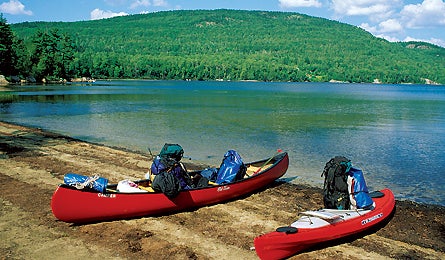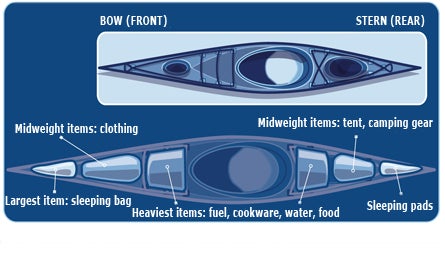Heading out the door? Read this article on the new Outside+ app available now on iOS devices for members! Download the app.

Use multiple dry bags for a balanced boat (Jerry & Marcy Monkman)

Illustration by Supercorn
Keep it dry
- Start with waterproof dry bags. Thin, coated nylon bags (such as SealLine, seallinegear.com) are lightweight and pack easily in tight spaces. If you’re a gear abuser, go with heavier rubber bags (like Watershed, drybags.com).
- Make gear easy to load and balance by organizing everything into several smaller dry bags instead of one big one. Use different color bags for clothing, food, etc.
- Pack the dry bag two-thirds full. An under-stuffed or overstuffed bag compromises the watertight seal.
- Before sealing, squish the dry bag with your knee to burp out extra air.
- Use the taped seam near the top of the bag to make the crucial first fold. Maintain horizontal tension as you roll.
Load the boat
- Pack as close to the water as possible so you won’t have to drag a heavy boat to the launch.
- Load items tightly so they won’t shift and become unbalanced as you go.
- Put light, bulky items like sleeping bags and sleeping pads in the very front and back of the boat.
- Midweight gear such as clothing, tents, and cooksets go in the middle of the bow and aft compartments.
- Place the heaviest gear–usually food, stove fuel, and drinking water–near the center of the boat.
- Keep cameras, sunscreen, snacks, water bottles, and maps where you can reach them: in front of your feet, between your legs, or behind the seat.